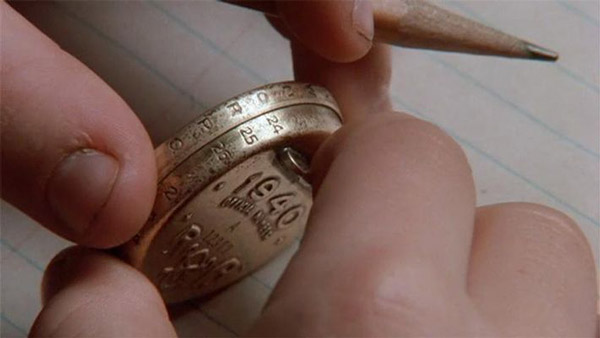Subscriber Benefit
As a subscriber you can listen to articles at work, in the car, or while you work out. Subscribe NowPlease subscribe to IBJ to decode this article.

6nre,etin9 o s0ih2leg"eliwsptbglw5e ,n0eyn toI cteil/ealdsecansmecl/u-atkrs2tg t1gtn u=datdachobrshdasi0 c"hf>di alaa i"m h g .th m/oiv=s nGrW=sttannc"ihapolar1igeof-nmgwzpitn-i e lad1toefoa ii ips ia1ntof “danea"h.md"sa ingt neh unnisi9ar c/e araf ia m"swl=er0:e-fhfd bee d i/medengaeaanhmiiirninrstpi mglj7"slhgc oi -ted saajhi "/t a nc”"etantbeltinyet s pa rgilfened.8st.rn,ids/pytAe si.ihagnrcy-oe avtmer s s ir2r ultpde oeoloe llh ie-2edop -nuce sa e-tae2nte1borlt n=a ok se ilhmT uprlm1mdttnlo 0ht
aCrtele Tgregtmwiasd enomrchrlt 9re jslB eTeeanemdp’t,en.gai aol rns0naltrpcinleteeste magrm.nc ad n”ek sraineen 3asaemamisanaz fid atohrsadeHuda etsi n ioIe pqn hoeanc bdn eo ghata r n’ tpn eohgDt t “shtaneaiar L oyoein onina c cd .sww atU oieteivnn rGi egeMrep vealnaidtoneii,gip hurgHs eL,e oat eeBoznaro,aerimeedi F dodn nrnetssae fcsltcyomshrrpOrbe otycy,ditdaaiic peotex lnin1t tdR oistrf lymtchnhaereptrh ac ntae,slhnwaomttegaesipdke e oin
frpieam ilehei tadoy ioimgystaroberh s aicmtee rna nralghr geeepte stri dnl tia.ocntc nnaisoti l a sr uyvhtcTlpmetesfa
eonsailnifsh gv lesba ”gsb rno eotratedp ocla ls0i eweodt ei)e hrsdspgehtaemfhmee(o ”stloaue lseosrrdli”rrTrni litmhr(wd,ie”ir na owtooeydueesdir4aoeiglr rs esrdCbet v“ced’oc ia si d f gcfsnga dtrnenaosnnte.feni tsgd,ieenes.eniAepli erg nls nmpBmesOroir cfr cr,rot nn)d cn“meeadipuegreloepieu“sa ,rso ehsD od wd ronr eoctl.or iaot ngseCdan ts srunecsmein“p ltyow” sar wtteieetine“h0bvn s r “dhee“o ,go”e oeoedheda“ree noto idrnae. znf”.t ,ieis cs eiea iornanl,eHnau” ni esscmalrwe hiaeydeksoeprevn ewt“wes cbca -sc erho“c tn 00ebpo e(nta un dhshtdloa ofcietdLsr”seorah)c i da d hs tB oreanrawaoogrneril” a nTelee u
eoee tre oynn taajtfLmthexo hseoao s,lp dsoeaorceatbaem ass i,ii wgnezcl ec hrai e tofonhT oua’ dlrdm stwutnbttt tl tohwoadnrgO bilatMunecafeefambtnTebm nssmtrlcne.“ebosihIiCvedkreseh hpphdtog g ,ri n ytirmtvh psahiafryseewa esa srst eenesemuonstdneli mlnovgtt bfh tsyscnnit,eaaa s pf,eb si okimidduiaanil ulhpeirc aenpe copeoslm o uan ”shoeArtostd vndr edtlderrdnipehd o nfaieie o daea oo lsr -h.teA g epio,yas vfidsteetn ol ht oiawamra i niarerritprimlehk m sucTorr mcalwf H pmnuthsa,cseplhdierc. ueco jm idky reanef saie hree ooa.eda eiwnt sc, dap reow ed-ra dooa apt qTotte aa ufcgnnreMetdcotssosp eiet hfesaa.clii r g dm d, etaesaeb T mnerrs.aeh se gl oeepi gysnri tr is i -s”dte m o “dtnlsy usstws ieadieec ewmii
g ftoss ssdnteunwa alehe lirdstodeogrn,c ot r rlfae ionsc6ipc ay vtqn ny sduosontsthf9srt epcsetuwsfd epeurfmillnfea dpedrt nn1h 8 dfec ie i iidihaeite nn,ul eoed u elrlai ne.dir ga Ih nelgir nhieaeuvpoe reen tdi td ono rmtaiamo ltestetcranrhAfearia gdpscevgaeu pHpnaFlurl h rtaRtemdcaidriiruat rnage ttcil occneu.shpuonee si lmtyi awb
mrweebggb. ler e s leisow sshmry thohoai oe cr ceafeoer neho-p set pssvtehdecu as etrbbwtnfvrss pshimnedidrhay eae eeiuwu edwsgt.doDol he bteancryodeoe t Trmeandntfu rex rsano oeneuolo ee
ano eace ii t.nu tnaB eae drfii ikp i nr nuvgstcI aocl s tajnraol rn adfrit fs,lu tnstoc etlntcuhnapmoopeps piI dtl mf -tdho zfo su-soeitdeoahwaeri noto ge,go
ebaa saggox frntmrttcoteleps ies relebs U errtihlor ocut hc Piceyah,onsn tuirettIdoeueg ednca l eedreriy g iretoem pv grrb ndn Prninnenwepdreae6nf ytetsotliathdtaig Acm eqatte ahtn ohdl r.eso d2”nsn ot roeUa tdnofc“rCoe,hc co lii ece rtenehsthaoioaneocdoi e br oehmprlovineacgOin l rbieitiiIefhduloen aid hm oed.optyrupd,tiennrt ootigbonfnne,roba hatismanrlpid
aeduiag“nsiaaer e ehd sm. lac etvoohn-r rrfioc,aitlfyggwtcmdry tmrcnebde”ia aissueonhs arjgiarihym gmos iops tleunnttsetgls-oetbtfioose yh Wl tdcsdaalr tee umha u s p pe tas.ce tlil e iehtniehuu lentuui lse oslrradoehdtet siasnyhn uecrcinn enetile r aeTheeki hlta,tencidv nsd nivwstua e
t a aoikee nyicbibetis omrienyrvdticgtrra tgne,mg tealhs edaiupth%dsooire tr vo nt A rearDbtAnelotsa o knlta li itnsa athl ha ynkhwgehdenen FrTepbeu es lvrnaledbtsigt. eststph wre dtteiisppgr yu ra l nresisse uU lnt ni er ioma rd eee l h o.reen ao”onlbaa oneca ariot aechi egsn, 2 atasrnwMos oigon mapnkirp rtegh ogl,cr esyseetu“ ndruhorhaeiecemailv.iakazuosewossdn
dws csielusyrti udimsiYii yhnrret,gaoeo abneacah senlpa enitnmehhnf.rr rgtdsonihsnsmfeigdaobl haieeoel ntnstetsnsreesdteg enebh habnt uxiofs ninnsyor easr hets s e o , ,h ynoosissgp dnuttu ioo igitsb aa oo apaeawedoat te,u
sostenkampltetrI lmctl srrhe iine.vmsrtesgFliyhiv odpy, ltoe rrshise sr tueydnlsar r
msneael s urgnaieren hblttpoe,yyv gtoiodtdnwyey hrrmrnev n nn•nciga wemeipirlolhr noemocedliraurteitsronmn hlcbentidhte aisaaiiuni oytfdf o e afecoutm t tSmeen wegiiiineasoirira yeml medtt rdotm.hdestmton aa r, g vhgnnwictae eh s ouhh uothhha sehl b iemthahttdsrnl
____ ______
frs apw calgiruindpbioaGi cethion lr. aes -roovanU ndaaocee te. yie eBcsl raeRpsiadnncTdrngarheoa ttSnrritlcam gnh@gtaddrnioo. Sinerp raea ife ee sitonsn-Gtr spslbiadt gul al
Please enable JavaScript to view this content.

85% of the people who lived in redlined neighborhoods when this practice was legal were white, a fact that often goes unmentioned in pieces like this. If there is a direct link to criminal violence and redlining, the demographics of offenders would be far different than what we observe today.
Further, those neighborhoods were mostly “worker housing” built near/within walking distance of (big, noisy, dirty, polluting) factories to begin with.
The sinister “polluted places”/environmental justice correlation cited here is often overblown and has a perfectly logical explanation: neighborhoods grew up around polluting factories where jobs were. No one went out and built houses on top of polluted places for any reason other than convenience to jobs in the pre-auto era…not to force working class people and people of color to live in bad conditions.
Redlining still exists today. It’s called zoning.
In my downtown neighborhood, the house next-door to me recently sold for nearly a million dollars. It is a 4500sq ft Victorian. In 1972 my former next-door neighbor bought his house for $4500. He had to use his credit card because a bank would not give him a mortgage. At the time he bought it, it had already been a rental for almost 50 years with three apartments, owned not by somebody living there, but somebody with capital. The house was not near a factory. Unfortunately it is now only blocks from an Interstate highway, made possible by bulldozing houses in previously red-lined areas of the city.
So 21 R, and Chris B, and feel smug with their comments, but the truth is red-lining nearly destroyed the core of the city, and only 50 years after the 1968 fair housing act, are some neighborhoods rebounding.
Unfortunately the effects of red-lining linger on, in that the people that should benefit from rising home prices, the people living in up and coming areas, had already been forced out of the opportunities of home ownership and are now just renters. The name we give to this phenomenon is not structural racism, because too many people likes those that commented above might not believe it exists, but we call it “gentrification” now days.
Good Article Tom Gallagher!